Within the world of video gaming, few names carry quite the weight that Valve does, especially amongst the PC community. With heavy hitter game series like Half-life, Left 4 Dead, and Dota as well as the veritable colossus of game distribution that is Steam, Valve has developed a reputation for excellent gameplay, visuals, and storytelling. However, in my humble opinion, no other series has mastered this mix of well-told story, stunning visuals, and riveting gameplay quite like the Portal series. The original Portal, released in 2007, saw the player take the role of Chell, a test subject at the Aperture Science Enrichment Center who is challenged by the antagonistic A.I. GLaDOS to complete increasingly challenging puzzles using the titular “handheld portal device”, or portal gun for short. This game, though admittedly short, offers the player challenging momentum-based puzzles via launching themselves and objects to a goal with their portals and a signature dry humor involving promises of cake during obvious murder attempts that, when combined, are nearly unmatched. The eagerly anticipated sequel, released in 2011, provided all of this and more.
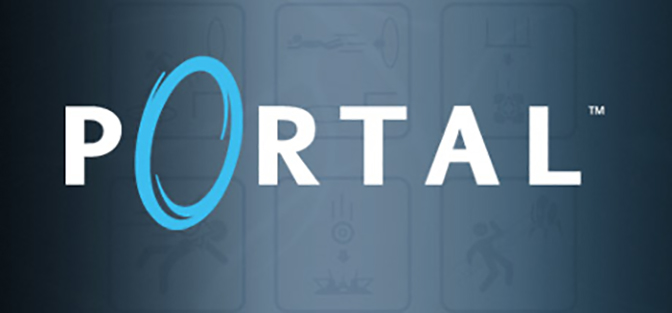
Upon the start of Portal 2, you awaken in the familiar Aperture Science Enrichment Center, although obviously neglected and in a state of decay. Your time to survey your surroundings is quickly cut short, however, when you’re introduced to Wheatley, a robot who teaches you the basics of movement and jumping as you begin your escape. You traipse through the degenerated facility and, thankfully, find the familiar portal gun, running through a few puzzles to reintroduce veterans or teach the uninitiated how portals work with physics. Unfortunately, you find GLaDOS a little while later and accidentally reactivate her, hurling you back into Aperture’s familiar testing area to learn more of how the game works. In the early testing chambers, you’re reintroduced to several familiar mechanics including portals and the weighted storage cubes, which are used to hold down weight-based switches. However, in short order, you are introduced to a slew of new mechanics like the “discouragement redirection cube,” used to redirect lasers, hard light bridges, used to walk above deadly pits, and later several gels, used to make a surface bounce like a trampoline, frictionless so you run faster, or able to have a portal. With these brand-new mechanics, the gameplay becomes a great deal more complex, building on the core game mechanics in a way that feels like a natural evolution of the physics-based puzzle solving of the first. The new mechanics and story go hand-in-hand to show you’re in the same Aperture, although it’s a bit different. These mechanics even inspired future puzzle games like Q.U.B.E and Antichamber, both games focused on logic-based solutions of one-room puzzles.
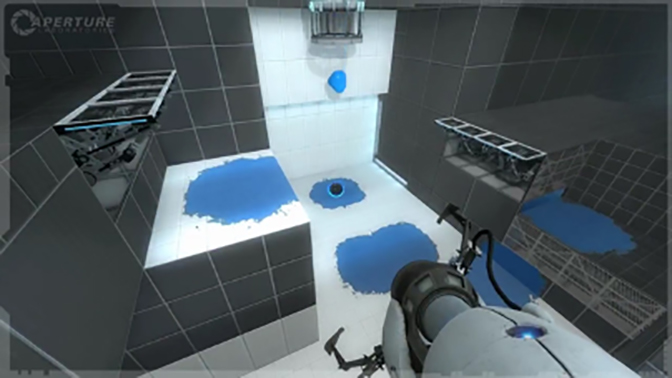
being expelled from a pipe. Valve, 2011
Along with the new mechanics introduced in single player, Portal 2 introduces a whole separate mode that turns Portal on its head: multiplayer. In this mode, two players take on the role of designed testing robots: the short, squat Atlas and the tall, lanky P-Body. As in the main campaign, the players take on tests devised by the devious GLaDOS, albeit with less snark. This mode is changed drastically from the base game simply due to the presence of two players with two portal guns, as now four portals can be out in the testing space at once, allowing the players to coordinate much more complex patterns of launching themselves. In addition, unlike the base game, multiplayer introduces timed puzzles. With the multiple portals and time limits, this mode changes the base gameplay of Portal 2 from a slower paced, take-your-time-to-solve experience to a hectic experience where you throw ideas against the wall and see what sticks, building up mistakes until you and your partner finally complete the puzzle.
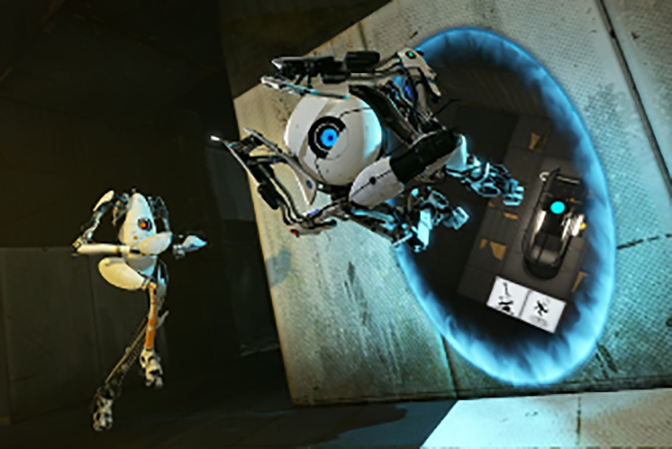
As has been established, the puzzle solving gameplay of Portal 2 is excellent. However, gameplay alone a good game does not make. Fortunately for the player, Portal 2’s aesthetic matches up perfectly with the gameplay. Carrying over from the first game, the Aperture test chambers follow a simple yet effective color scheme: white surface for portals, dark surfaces you can’t put a portal on, red for important interactable objects, and blue and orange for your portals. These designs, while effective for gameplay, also present Aperture as a sterile, robotic location, devoid of anything but the drive for science, inspired partially by the setting of the 2005 film The Island. However, in this sequel, the chambers from the original game have dark decayed and overgrown portions, demonstrating the passed time and Aperture’s decline. Additionally, when the player eventually breaks out of the testing chambers, they enter an older Aperture, complete with retro, 60’s-esque lettering from its founding on the signs and architecture based on that at CERN and NASA. These aesthetic choices all scream “science”, perfect for the puzzle game based on physics.
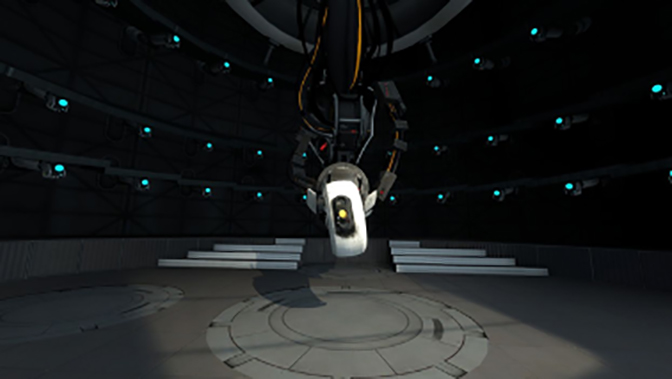
looming over the player. Valve, 2011
From a robotic core who repeats blatantly false facts like “at some point in their life 1 in 6 children will be abducted by the Dutch” to an unfolding backstory of Aperture’s creation and subsequent extermination of mantis-men, a feature that truly sets apart Portal 2 is the game’s comedy. Now normally, “puzzle game” and “comedy” aren’t exactly considered to be a pair, with puzzles being the dry, stiff game that you spend time pondering about and comedy being the one you don’t think too hard about, only laugh at. However, Portal 2 pulls it off mainly through its NPCs. GLaDOS, while playing the role of antagonist, is not your typical mustache-twirling fiend. She’s passive-aggressive, constantly reminding you of how you MURDERED her in the last game and taking digs at your weight like a high school bully. And it’s hilarious. The perfect example is when you launch yourself through a portal and GLaDOS compares you to a majestic eagle… piloting a blimp. On the complete opposite end from GLaDOS is the aforementioned Wheatley. He’s also a robot, but is a lovable buffoon, “hacking” the controls to a door by bashing the window open with his body. A final NPC is one who you don’t even meet: Cave Johnson, the former CEO of Aperture whose prerecorded messages include threatening to burn down life’s house using the lemons it gave him. With these NPCs and even more, the game perfectly weaves its comedic moments in with its gameplay to create a cohesive experience that keeps players engaged.
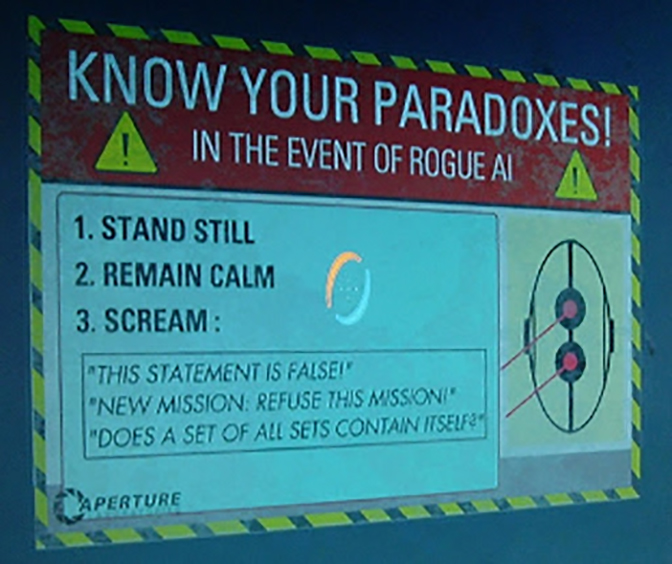
the game’s antagonist using paradoxes. Valve, 2011
Portal 2:
Developer/Publisher: Valve
Director: Joshua Weier
Producer: Gabe Newell
Artists: Jeremy Bennett and Randy Lundeen
Writers: Erik Wolpaw, Jay Pinkerton, and Chet Faliszek
Composer: Mike Morasky
Platform: PS3, Xbox 360, Windows, Mac, Linux
Release: April 19, 2011
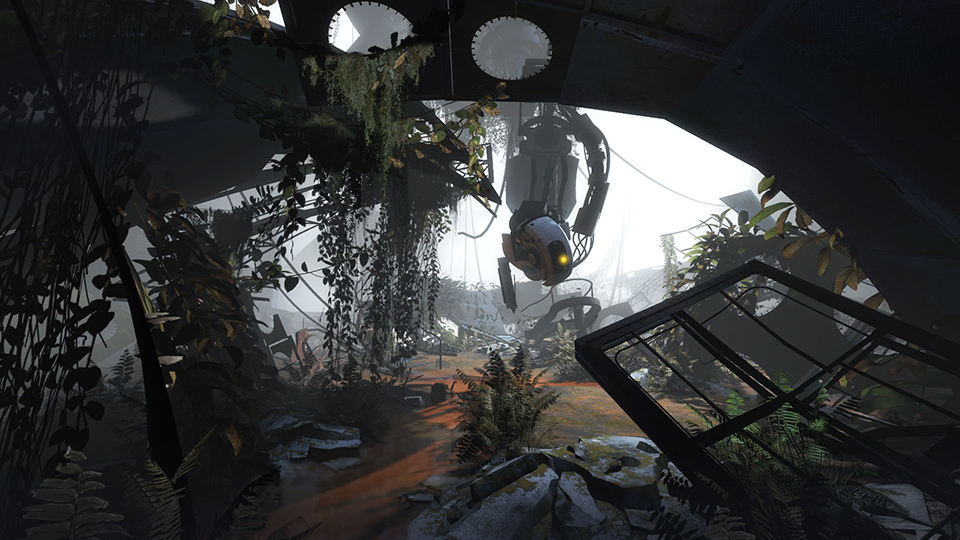
All images copyright © Valve, 2011.
Additional content and videos:
Portal 2 teaser trailer from 2010 –https://youtu.be/tax4e4hBBZc
IGN review of Portal 2 –https://www.ign.com/articles/2011/04/19/portal-2-review
Eurogamer review of Portal 2 –https://www.eurogamer.net/articles/2011-04-19-portal-2-review
PC Gamer review of Portal 2 – https://www.pcgamer.com/portal-2-review/
Review by Eric Nelson, a biology major at the University of St. Francis with a keen interest in environmental issues as the biosphere changes around me, often for the worse. In addition to gaming and science, he has a love for everything culinary and obsesses over Dungeons and Dragons.


